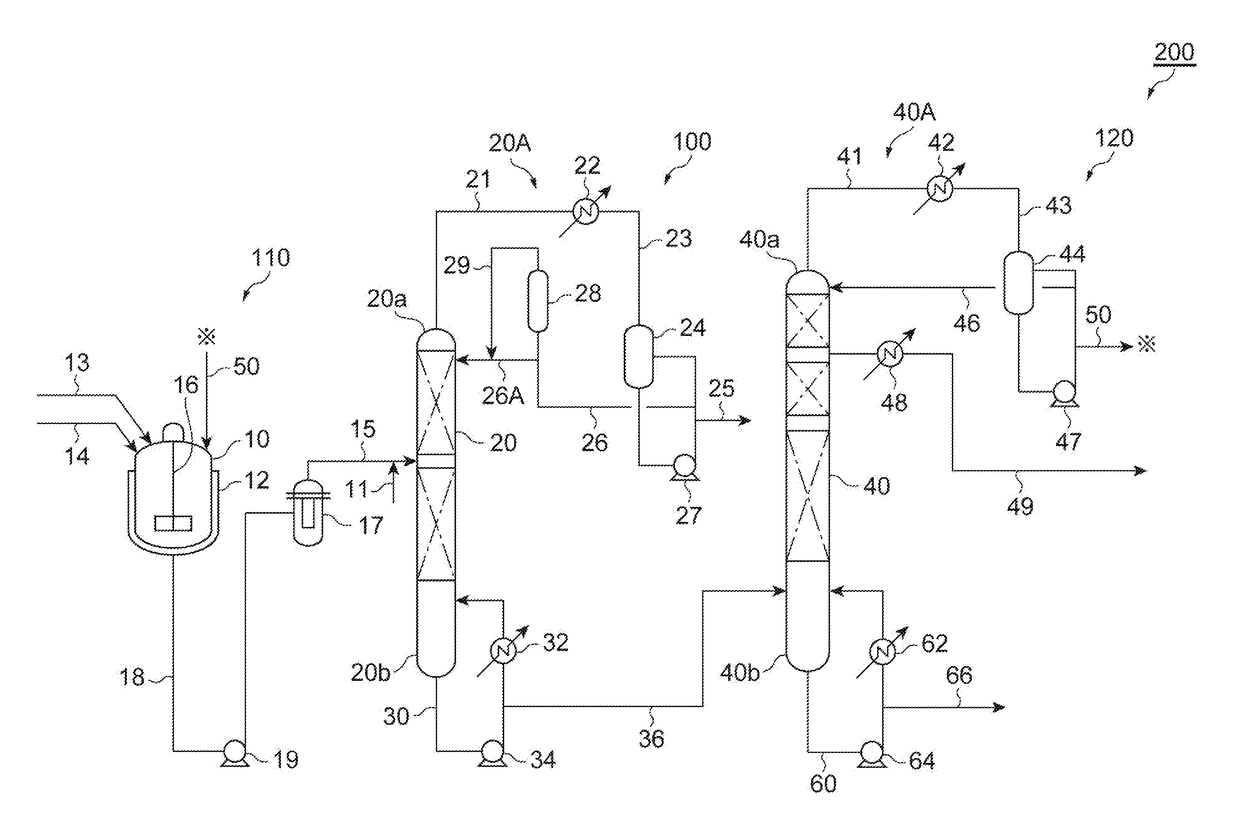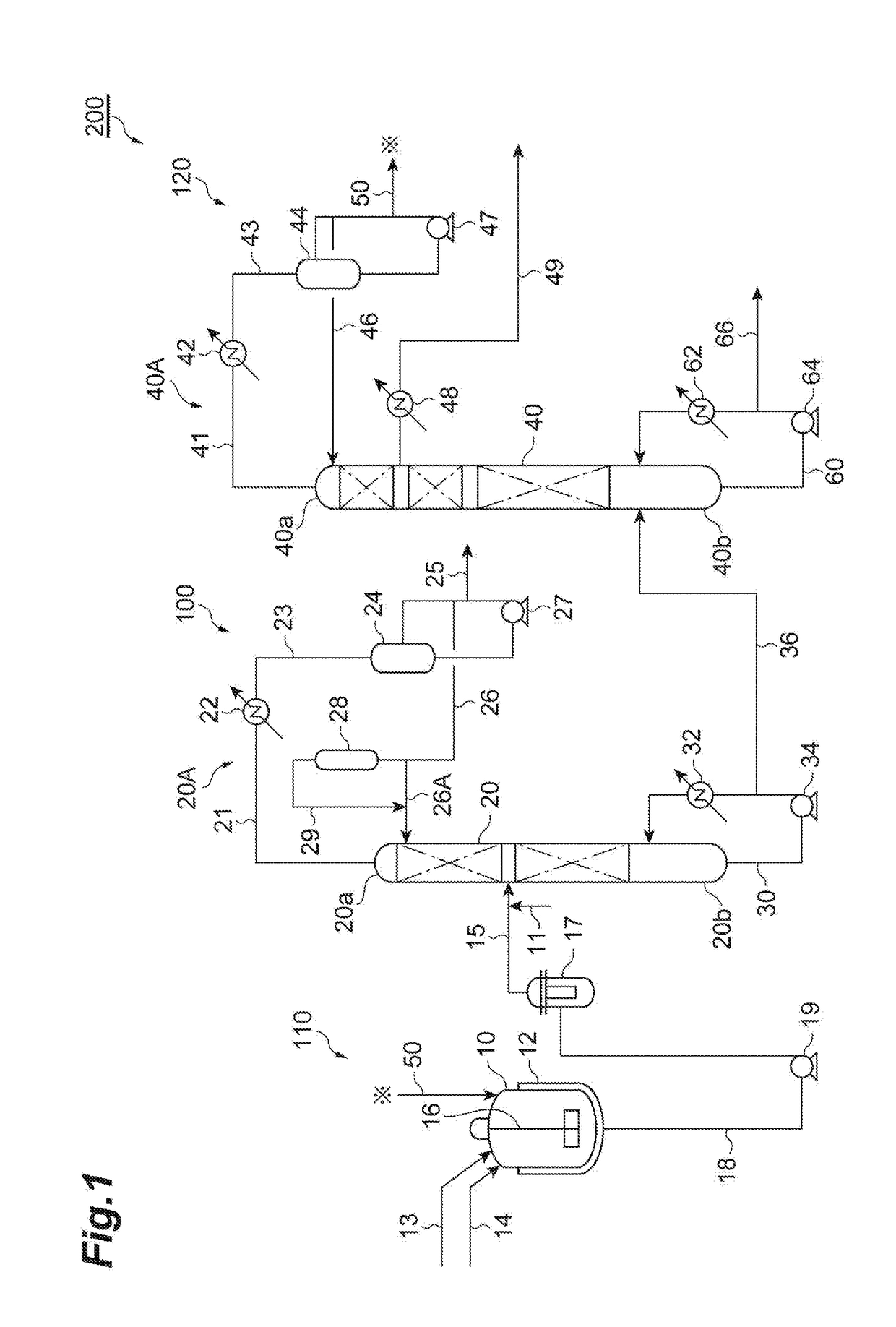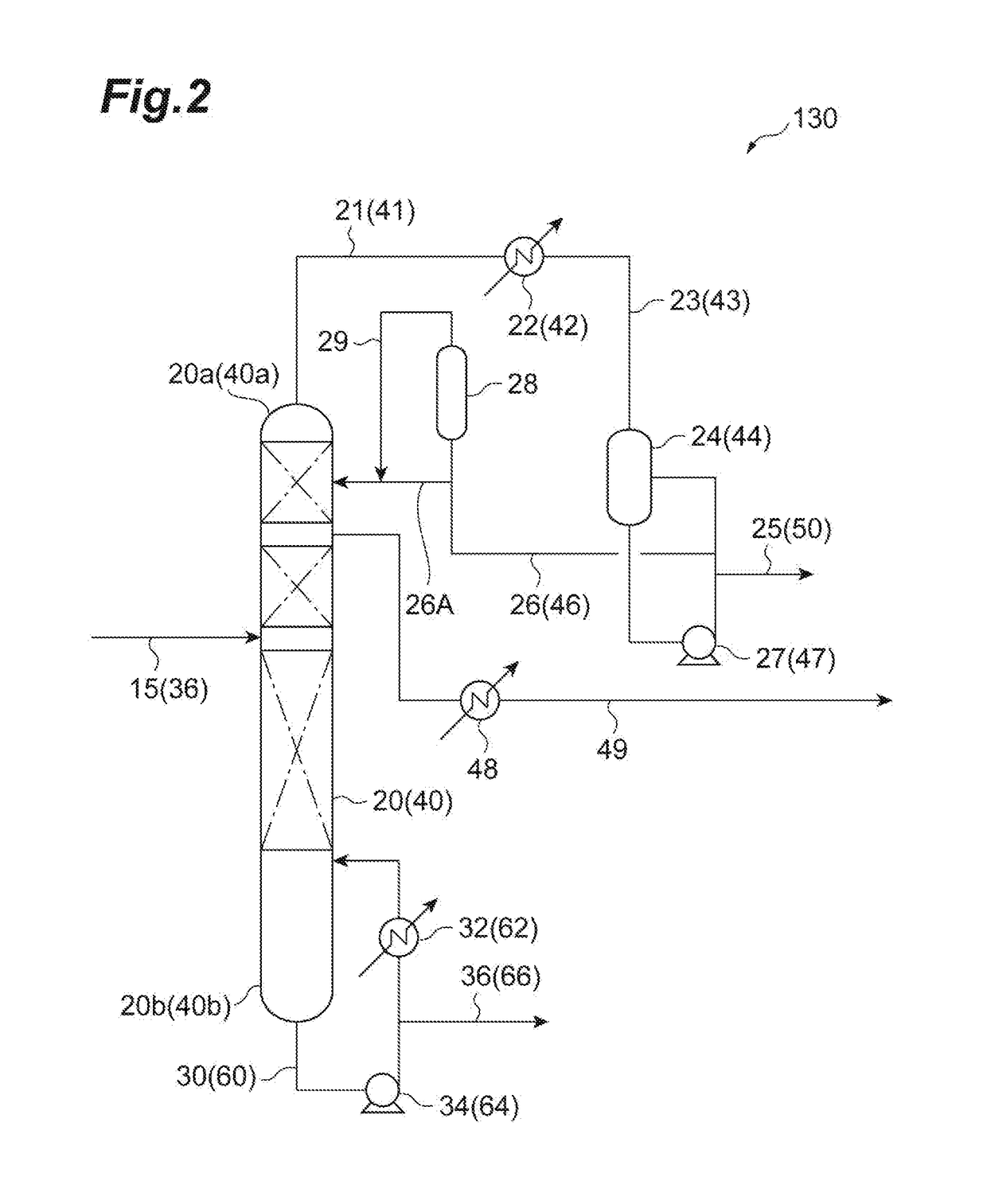Carbonate ester purification method, carbonate ester solution production method, and carbonate ester purification apparatus
- Summary
- Abstract
- Description
- Claims
- Application Information
AI Technical Summary
Benefits of technology
Problems solved by technology
Method used
Image
Examples
example 1
[0091]A formaldehyde-containing dimethyl carbonate solution (the first solution) was prepared by the process illustrated in FIG. 3. The composition of the first solution was as shown in Table 1. Methanol was added to the dimethyl carbonate solution to prepare a supply solution with a methanol content of 2 mass %. A jacketed glass tube having an inner diameter of 8 mm was packed to 10 cm with Amberlyst 15JS-HG•DRY (trade name, manufactured by ORGANO CORPORATION, styrene cation exchange resin) as the catalyst for promoting the acetalization and hemiacetalization of the formaldehyde. The supply solution was passed through the glass tube packed with the catalyst in a flow rate of 100 ml / hr while heating the catalyst by circulating warm water of 50° C. in the jacket.
[0092]At the time of having passed the solution for 1 hour, the effluent from the glass tube was analyzed. As a result, the inversion rate of the formaldehyde was 98.2 mass %, thereby revealing that the content of the formald...
example 2
[0093]A stainless steel jacketed treatment tank (300 L) equipped with a thermometer and a stirrer was charged with 250 L of the dimethyl carbonate solution (the first solution) shown in Table 1. Warm water was allowed to pass through the jacket while stirring the dimethyl carbonate solution to adjust the solution temperature to be 40° C. 4.07 g of a methanol solution with a sodium methylate content of 15 mass % (equimolar to Cl of 1.5 mass ppm) was added to the dimethyl carbonate solution and continuously stirred for 1 hour. A part of the obtained treated solution was sampled and filtered, and the filtrate was analyzed. The composition of the filtrate was as shown in Table 2.
[0094]As shown in Table 2, it was verified that the addition of the alkali compound to the dimethyl carbonate solution can reduce the chlorine compound and the nitric acid compound. Additionally, it was verified that such an addition can reduce not only the chlorine compound and the nitric acid compound but also...
example 3
[0100]The discharged liquid from the bottom obtained in Example 2 was supplied to a distillation column (theoretical number of shelves: 16 shelves) provided with a random packing, boiled under an ordinary pressure for the total reflux. Then, the distilled liquid was gradually discharged from the column top while maintaining a column top temperature of 90° C. or more. After discharged about 3 vol % of the supplied liquid volume from the column top, a reflux ratio was adjusted to be 1.5. Subsequently, the dimethyl carbonate solution was distilled off at a side cut arranged at a position ¼H lower from the column top (a height of ¾H from the column bottom) when the total height of the distillation column is defined as H. The composition of the dimethyl carbonate solution obtained by the side cut was as shown in Table 4.
TABLE 4ComponentSide cutDimethyl carbonate99.998%Methanol2 ppmFormaldehyden.d.Water10 ppm Chlorine compoundn.d.Nitric acid compoundn.d.DMMEn.d.MEC3 ppmMVCn.d.Fen.d.CH3OCH...
PUM
| Property | Measurement | Unit |
|---|---|---|
| Boiling point | aaaaa | aaaaa |
Abstract
Description
Claims
Application Information
 Login to View More
Login to View More - Generate Ideas
- Intellectual Property
- Life Sciences
- Materials
- Tech Scout
- Unparalleled Data Quality
- Higher Quality Content
- 60% Fewer Hallucinations
Browse by: Latest US Patents, China's latest patents, Technical Efficacy Thesaurus, Application Domain, Technology Topic, Popular Technical Reports.
© 2025 PatSnap. All rights reserved.Legal|Privacy policy|Modern Slavery Act Transparency Statement|Sitemap|About US| Contact US: help@patsnap.com



